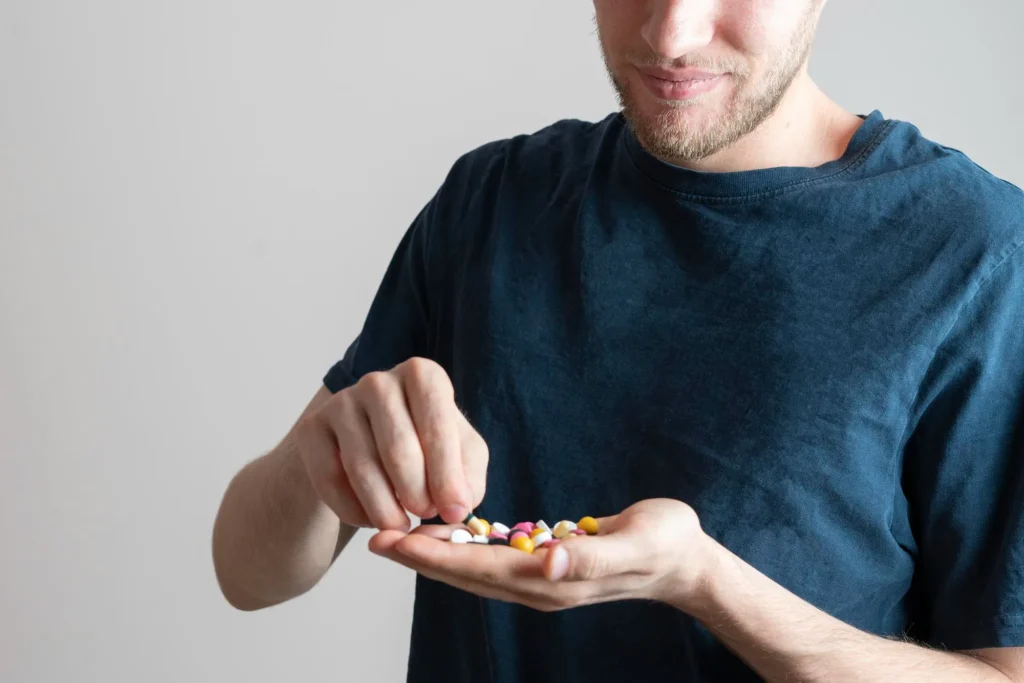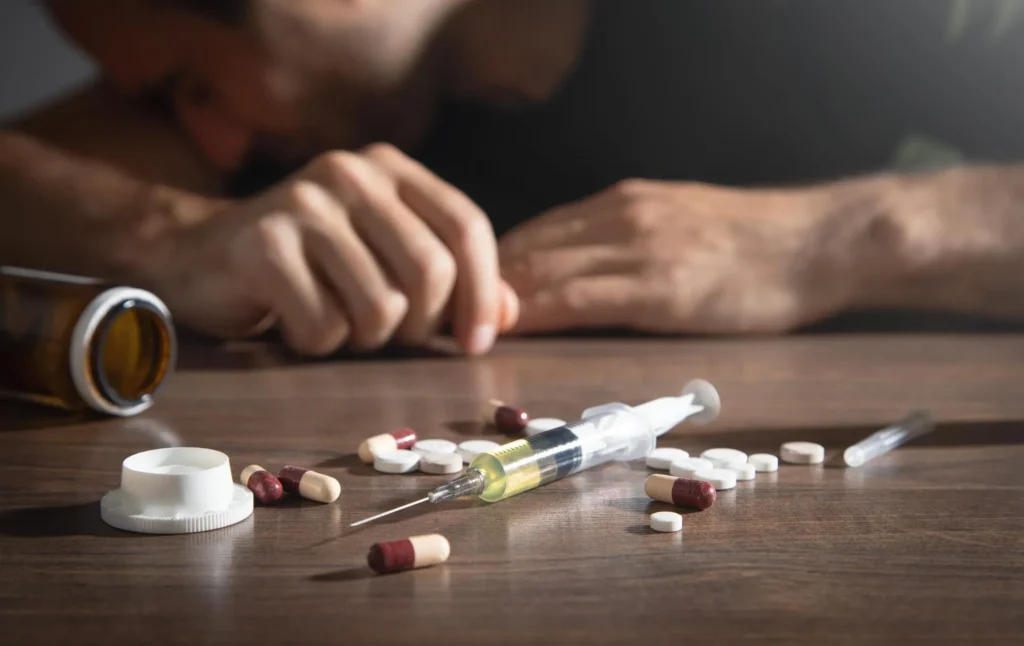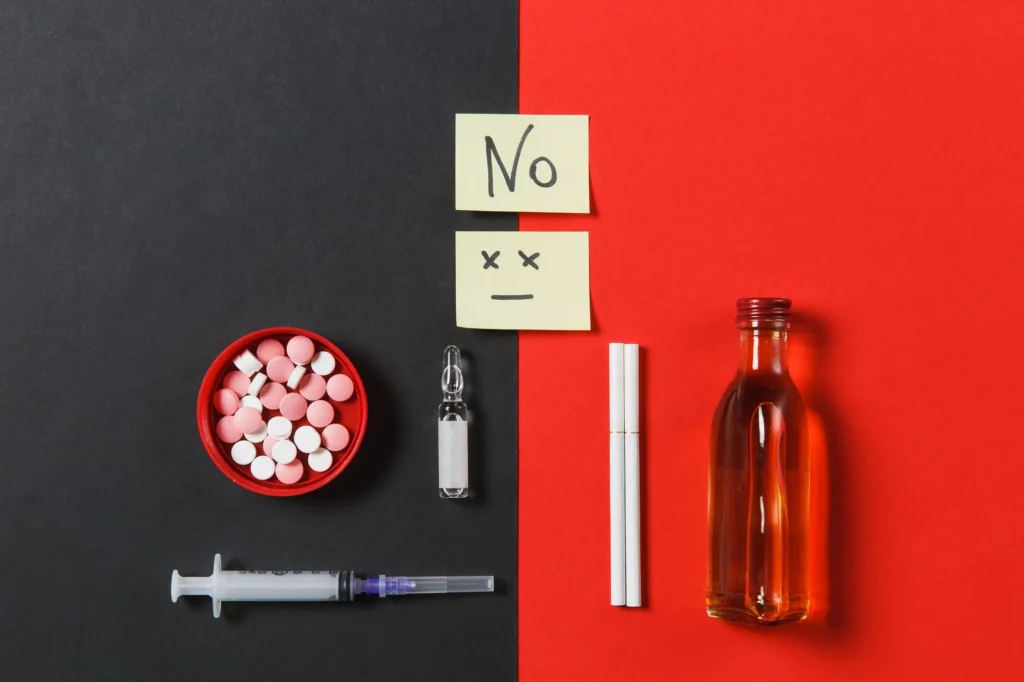Addiction is a progressive condition, often developing through distinct stages from initial experimentation to full-blown addiction.
This evolution isn’t merely a matter of frequency or amount of substance used; it involves escalating psychological and physical dependencies that fundamentally alter behaviors and priorities.
Understanding these stages is crucial for early intervention and effective treatment.
Recognizing early signs, like increased tolerance or lifestyle changes geared towards substance use, can prevent the descent into more dangerous stages.
This knowledge is not only vital for individuals at risk but also for caregivers and healthcare professionals.
It can enable them to implement timely and appropriate prevention strategies and treatments, potentially halting the progression before it reaches a critical, life-altering stage.

What is Addiction?
Addiction is a complex, chronic disorder characterized by compulsive substance use despite harmful consequences.
It involves significant changes in the brain, leading to an intense craving for a substance or behavior, loss of control over its use, and continued involvement despite adverse outcomes.
This condition goes beyond physical dependence, encompassing psychological elements that drive behavior.
Unlike casual or recreational use, where individuals may periodically engage in substance use without disruption to their daily lives, addiction disrupts everyday functioning.
It transcends voluntary control, making it difficult for the addicted individual to abstain, despite a genuine desire to stop, marking a stark contrast from non-addictive, occasional use.

Stage 1: Experimentation
The experimentation stage of addiction is marked by the initial, often voluntary, use of a substance or engagement in a behavior.
This stage is characterized by sporadic use, typically driven by curiosity, a desire for new experiences, or social motives.
It’s common among adolescents and young adults, where peer pressure plays a significant role.
Experimentation can also stem from a need for stress relief or escape from personal problems, where individuals turn to substances or behaviors to cope with emotional or psychological challenges.
During this phase, use is typically irregular and dictated by social situations rather than physical or psychological needs.
The individual can take it or leave it without experiencing withdrawal symptoms or a persistent desire to engage in the activity.
However, the transition from experimentation to regular use can be subtle and gradual.
Signs indicating a shift towards regular use include an increased frequency of use, a growing preoccupation with the substance or behavior, and beginning to use it alone or in non-social situations.
There might also be an increased tolerance, where more of the substance is needed to achieve the same effect.
These signs suggest the emergence of a pattern that could lead to dependence and, ultimately, addiction.

Stage 2: Regular Use
Stage Two of addiction, Regular Use, is characterized by a more consistent pattern of substance use or behavior.
Unlike the experimentation stage, where usage is sporadic and often driven by external factors like social settings, regular use involves a more established pattern.
This might manifest as using a substance every weekend, engaging in a behavior every evening, or developing specific rituals around the use.
It becomes a predictable part of the individual’s routine, although it may not yet disrupt daily life significantly.
Importantly, regular use doesn’t inevitably lead to addiction. Many individuals can engage in regular use without developing an addiction, especially when they maintain control over their usage and it doesn’t result in negative consequences in their lives.
The key difference lies in the ability to stop without experiencing severe withdrawal symptoms or overwhelming cravings.
However, there are warning signs that dependency may be developing.
These include an increased tolerance, where more of the substance or more intense engagement in the behavior is required for the same effect.
There might also be mild withdrawal symptoms when not using or engaging in the behavior, such as irritability or restlessness.
Other signs include a gradual prioritization of the substance or behavior over other activities and responsibilities, and continuing usage despite recognizing its potential harm.
These signs indicate a critical point where intervention can prevent the progression to more severe stages of addiction.

Stage 3: Risky Use/Abuse
Stage Three of addiction, Risky Use or Abuse, signifies a significant escalation from regular use, marked by the user engaging in increasingly hazardous behaviors.
This stage is distinguished from regular use by the element of risk involved.
While regular use might be incorporated into daily routines without apparent immediate consequences, risky use often leads to situations that endanger the user or others.
Behaviors indicative of this stage include driving under the influence of substances, using drugs or alcohol in potentially dangerous situations, or combining different substances to enhance effects.
Individuals may also start neglecting responsibilities, whether at work, school or in personal relationships, as substance or behavior takes precedence.
There’s often a disregard for the personal and legal consequences of their actions.
The potential consequences of risky use are profound and far-reaching.
They can include legal issues, such as arrests for driving under the influence, health problems due to excessive or unsafe consumption, accidents, and injuries.
Social and interpersonal relationships can suffer significantly, leading to isolation, conflicts, and loss of trust.
At this stage, the user’s behavior begins to have a visible impact on their life and the lives of those around them.
This signals a critical need for intervention to prevent further escalation into dependence and full-blown addiction.

Stage 4: Dependence
Stage Four of addiction, Dependence, is a critical phase where the individual’s body or mind becomes accustomed to the presence of a substance or engagement in a behavior.
Dependence is often a precursor to addiction but differs in crucial ways.
While addiction is characterized by a compulsive need despite harmful consequences, dependence primarily revolves around the physical or psychological reliance on a substance or activity.
Physical dependence develops when the body adapts to the substance, leading to tolerance (needing more to achieve the same effect) and withdrawal symptoms when the substance is not used.
These symptoms can be physical, like nausea, shaking, or headaches, and they indicate the body’s adjustment to the constant presence of the substance.
Psychological dependence, on the other hand, involves emotional or mental reliance on a substance or behavior.
Signs include using the substance to cope with stress, mood swings, anxiety, or depression when not engaging in the behavior and an overwhelming preoccupation with obtaining and using the substance.
Both forms of dependence are marked by a significant shift in the individual’s priorities and lifestyle.
Activities once enjoyed may be abandoned in favor of substance use or engaging in addictive behavior.
This stage is crucial for intervention, as dependence can swiftly transition into full addiction, where the physical and psychological grip of the substance or behavior becomes even more entrenched and challenging to overcome.
Begin your journey towards a new life with our comprehensive program which promotes addiction recovery in Los Angeles, and is designed to provide you with the tools and support needed for lasting change and a healthier future.

Stage 5: Addiction
Stage Five, the final and most severe stage of addiction, is where the individual fully succumbs to the addiction, experiencing a loss of control over their substance use or behavior.
This stage is defined by an overwhelming compulsion to engage in the addictive activity, regardless of the negative consequences it brings.
The primary characteristic of this stage is the complete loss of control.
The individual may have made one or more attempts to quit or cut back but finds themselves unable to do so.
The addiction dominates their daily life, often leading to neglect of personal and professional responsibilities.
Withdrawal symptoms become more severe and can be both physical and psychological, reinforcing the cycle of addiction.
The impact of addiction at this stage is profound and multifaceted.
Physically, the individual may suffer from deteriorating health due to substance abuse or neglect of self-care.
Relationships are heavily strained or broken, as the addiction takes precedence over personal connections.
Professionally and socially, the consequences can include job loss, financial hardship, and social isolation.
The cumulative effect of these impacts can lead to a significant decline in overall quality of life, making recovery and rehabilitation both challenging and essential.

Prevention and Treatment
Preventing the progression through the stages of addiction involves early intervention, education, and awareness.
Recognizing early signs of substance misuse and addressing underlying issues like stress or mental health disorders can halt the progression toward addiction.
Addiction treatment is multifaceted, and tailored to individual needs.
Therapy, including cognitive-behavioral therapy, helps modify behaviors and thought patterns related to substance use.
Support groups provide a community of peers facing similar challenges, offering empathy and shared experiences.
Medication can be crucial for managing withdrawal symptoms and treating underlying mental health conditions.
Combining these approaches often yields the most effective results in overcoming addiction.

Summary
Recognizing the stages of addiction is crucial for timely intervention and effective treatment.
Each stage, from experimentation to full addiction, offers distinct signs that, if identified early, can prevent the escalation of substance misuse into a life-altering dependency.
Individuals, caregivers, and healthcare professionals need to be aware of these progressive stages to intervene effectively.
Seeking help at any stage is vital. Support is available through therapy, medication, and support groups, offering hope and assistance for recovery.
We must encourage open conversations about addiction, removing stigma and facilitating access to help for those struggling, reinforcing that recovery is always possible.






















